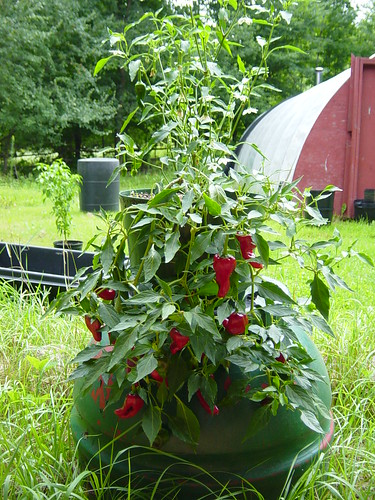The thread a few days ago about everyone's fave New Mexico pod types got me reading up on the history of New Mexico chile culture. This is some real interesting stuff to me: Before the "industrialization" of chile farming in southern New Mexico most peppers were grown on small family farms that descended from the original Spanish settlers. The varieties they grew were "landrace" types that had evolved over hundreds of years of cultivation. These landrace chiles were wiped out in the early 20th century by the rapid adoption of newer, more productive, more consistent varieties developed at New Mexico State University, such as "Big Jim" and "6-4." However, some of the older, smaller farms still survive around Santa Fe and Taos, growing the old landrace chiles. This topic may have all been covered before in this forum...I haven't checked. But I would be interested to hear if anyone on the THP boards is into all this. It's ironic that now the folks at NMSU are the very ones most interested in preserving the ancestral chile types...
Google for "Northern New Mexico Landrace Chiles" to read some great info.
On a related, equally interesting note, since I live in Louisiana, look into "Perique tobacco of St. James Parish..." Now that is a trip!
Google for "Northern New Mexico Landrace Chiles" to read some great info.
On a related, equally interesting note, since I live in Louisiana, look into "Perique tobacco of St. James Parish..." Now that is a trip!

